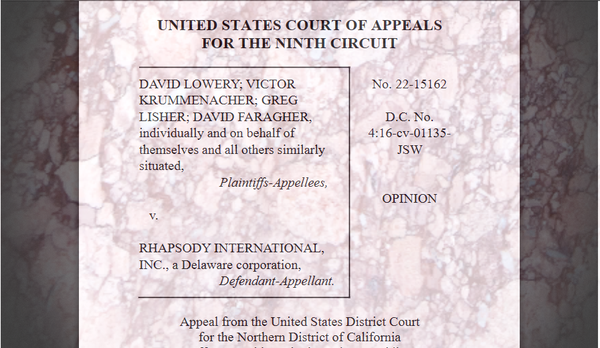
Federal courts are taking a closer look at tying fee awards in claims-made settlements to the actual benefits delivered to the class members, as opposed to the long-standing approach of calculating fees based on the benefits made available to the class.
In Lowery v. Rhapsody International, Inc., the Ninth Circuit reversed a $1.7 million fee award in a claims-made class settlement because only $53,000 in class benefits were distributed, despite $20 million in benefits being available.
Class settlements usually involve two types – common fund or claims-made settlements. In a common fund a particular fixed amount is agreed upon as a class settlement, and from that common fund all expenses are typically drawn, including settlement benefits, plaintiffs' attorney fee awards, service awards for the class representatives, and claims administration and notice costs.
Attorneys’ fees are based on a percentage of the common fund, usually between 25 and 35 percent.
In a claims-made settlement, the parties agree to make benefits available to class members upon submission of a “claim.” The total value of the benefits may be capped or uncapped. The volume and amount of claims submissions will determine the total monetary value of the benefits that a defendant will pay. Attorneys’ fees are typically based upon the total value of the benefits made available to the class (and often the value of injunctive or other business practice changes), as opposed to the amounts claimed by the class members. These attorney fees (and administrative and other costs) are usually paid in addition to, or apart from, the claims payments made to the class.
In Lowery, which was a music copyright class action, Rhapsody, the company behind Napster, agreed to pay class members up to $20 million for claims submitted, but because of a prior related settlement only slightly more than $50,000 was paid out. On appeal, the panel found that the $1.7 million fee award (already reduced from an application seeking more than $6 million) to the plaintiffs' counsel, "more than thirty times larger than the amount paid to class members," was not reasonable. The panel also held that the primary factor is the actual or realistically anticipated benefit to the class — not the maximum or hypothetical amount — in assessing the value of a class action settlement.
It will be interesting to see the ramifications of this decision within the 11th Circuit, where courts have employed the traditional method for assessing fees in claims-made settlements for decades.
The select mediators and arbitrators at UWWM’s Center for National Class & Mass Actions have decades of specific experience in class and mass actions and are uniquely qualified to assist you in resolving these legal disputes. For further information and scheduling, please visit our website.
Previous Article